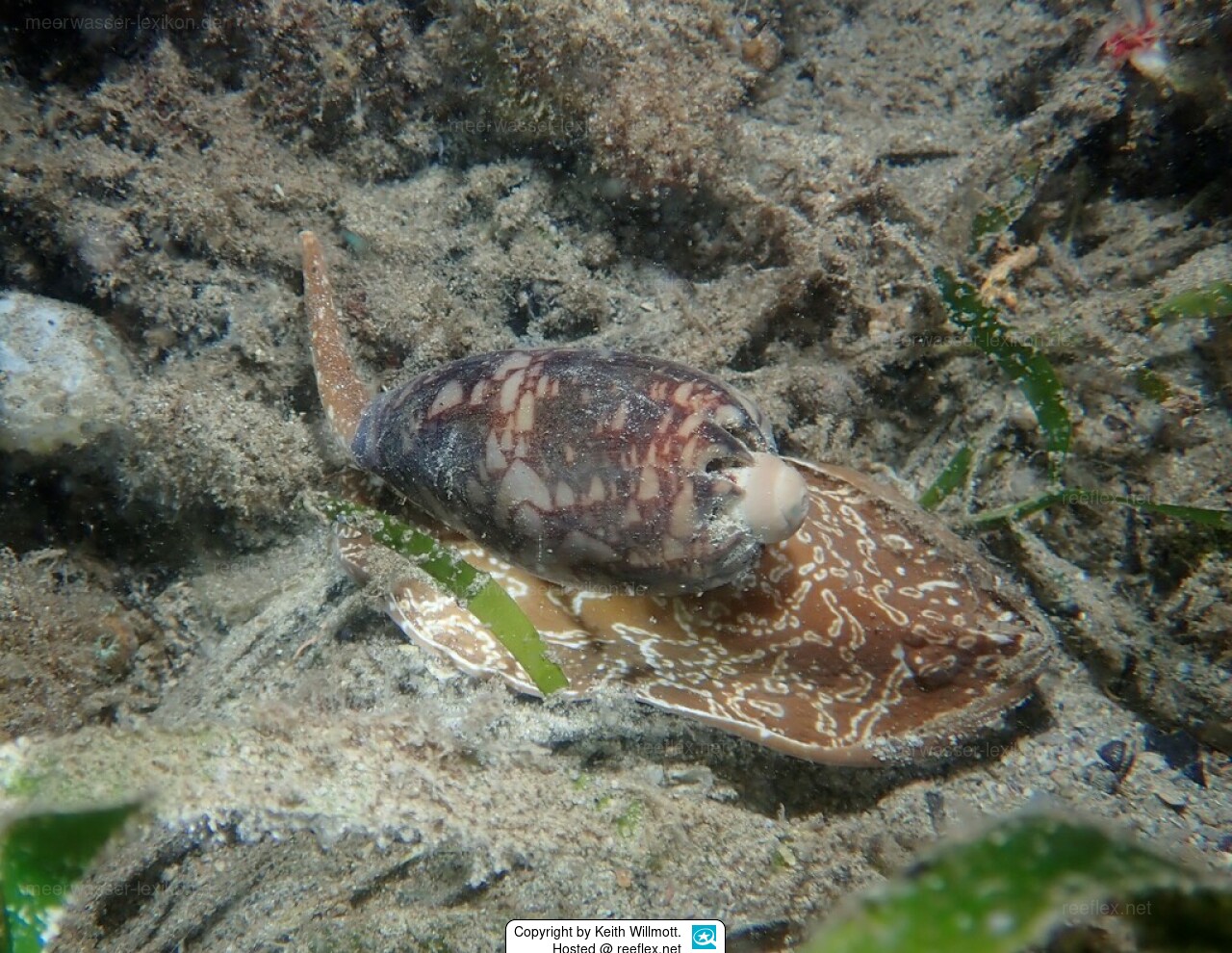Info
Melo miltonis (J. E. Gray, 1833)
A shell snail from the family Volutidae, colloquially known as roller snails. Members of the family live in warm and temperate seas, especially on the coasts of Australia. They are mostly carnivorous and dig in sandy soil for prey, which often consists of other mollusks.
In members of the family Volutidae, the male fertilizes the female internally. There is no free-swimming larval stage and young snails emerge from the egg. As a result, these snails have a limited range and local populations can be wiped out through overcollection.
The distribution of Melo miltonis is limited to the southwest of Australia. In particular, the very large predatory shell snail Houtman Abrolhos occurs off the coast of Western Australia as far as South Australia.
The length of the shell can be up to 450 mm. The shell has distinctive cream and brown markings. Shells of this type have long been used by the peoples of Australia to transport or carry away water, hence the common name "bailer", which is also used for many other volutes of this genus. The very large foot is also covered in concentric patterns in the same colors as the shell and is often used for devouring prey.
Melo miltonis is one of a group of volutes known as water containers due to their value in water storage to the indigenous people. Like other scoop clams, Melo miltonis remains hidden under sand most of the time, emerging at night and on cloudy days in search of molluscs.
Synonymised names
Voluta miltonis J. E. Gray, 1833 · unaccepted (original combination)
A shell snail from the family Volutidae, colloquially known as roller snails. Members of the family live in warm and temperate seas, especially on the coasts of Australia. They are mostly carnivorous and dig in sandy soil for prey, which often consists of other mollusks.
In members of the family Volutidae, the male fertilizes the female internally. There is no free-swimming larval stage and young snails emerge from the egg. As a result, these snails have a limited range and local populations can be wiped out through overcollection.
The distribution of Melo miltonis is limited to the southwest of Australia. In particular, the very large predatory shell snail Houtman Abrolhos occurs off the coast of Western Australia as far as South Australia.
The length of the shell can be up to 450 mm. The shell has distinctive cream and brown markings. Shells of this type have long been used by the peoples of Australia to transport or carry away water, hence the common name "bailer", which is also used for many other volutes of this genus. The very large foot is also covered in concentric patterns in the same colors as the shell and is often used for devouring prey.
Melo miltonis is one of a group of volutes known as water containers due to their value in water storage to the indigenous people. Like other scoop clams, Melo miltonis remains hidden under sand most of the time, emerging at night and on cloudy days in search of molluscs.
Synonymised names
Voluta miltonis J. E. Gray, 1833 · unaccepted (original combination)







 Keith Willmott, USA
Keith Willmott, USA







